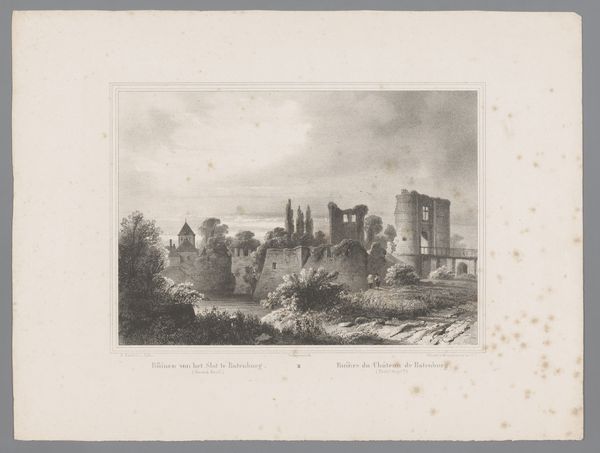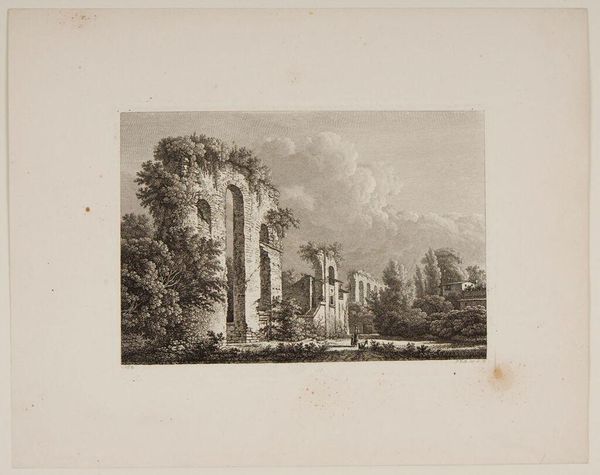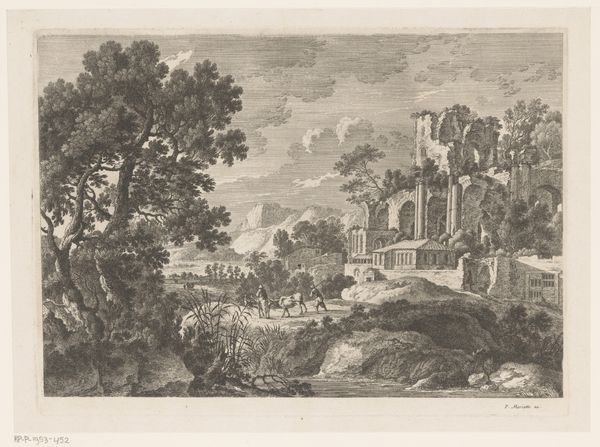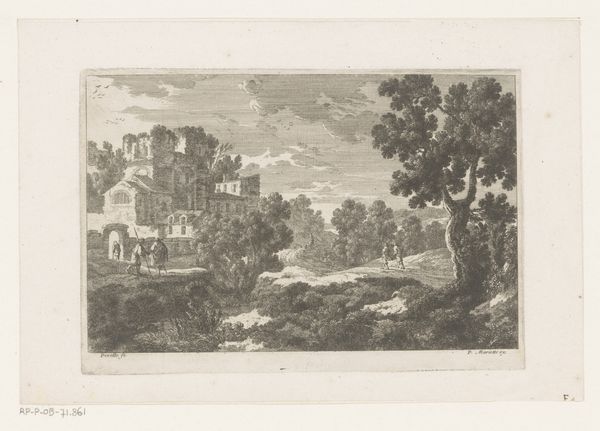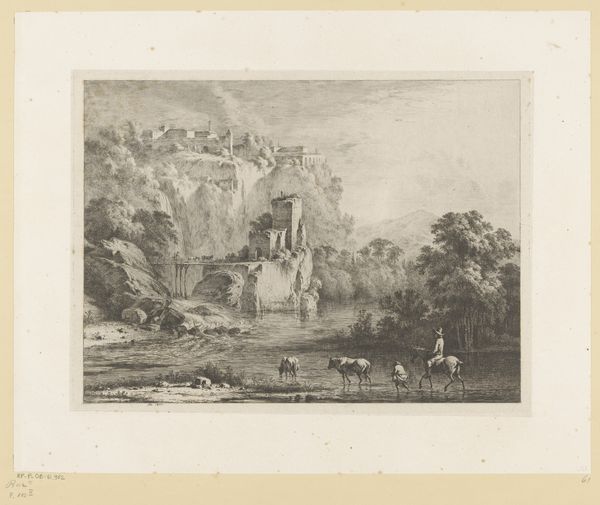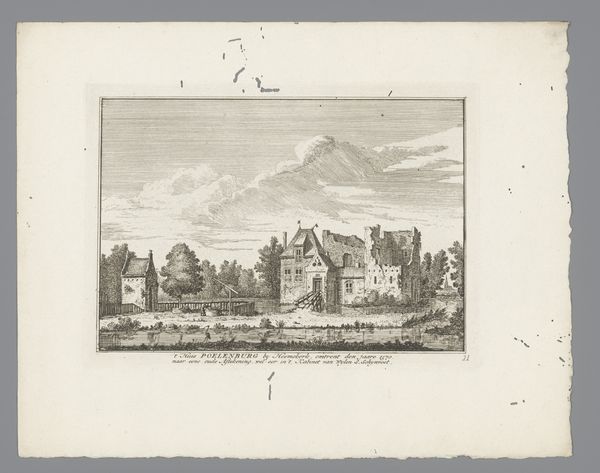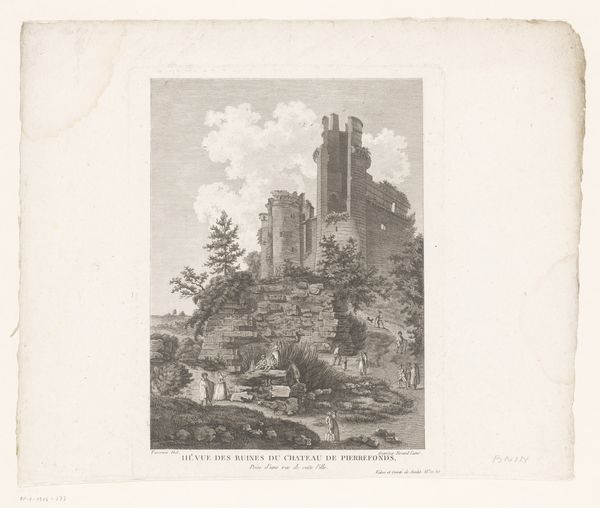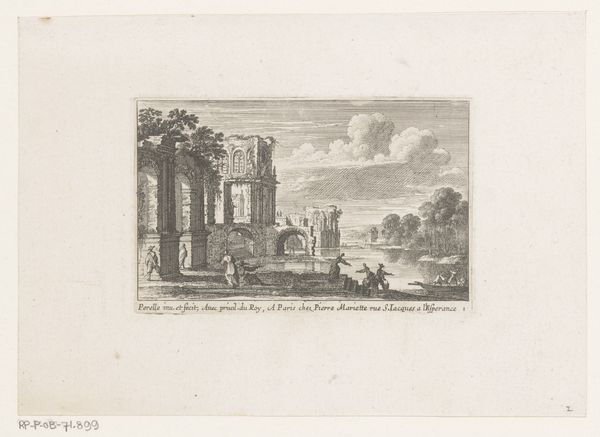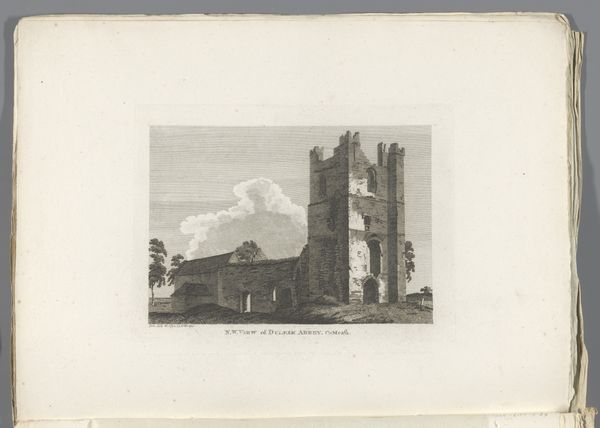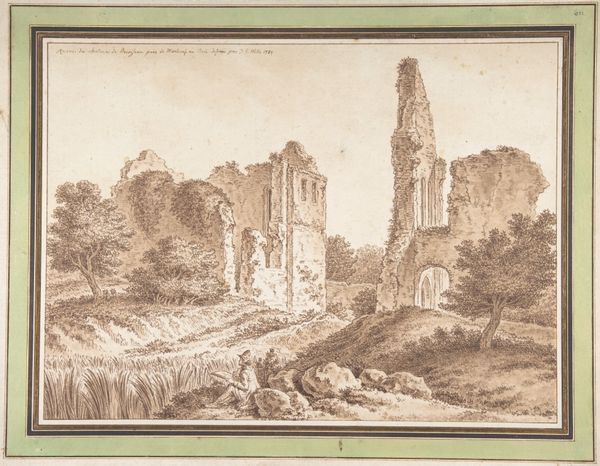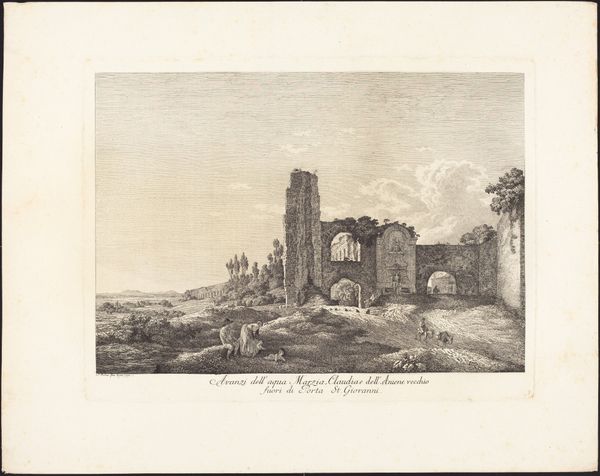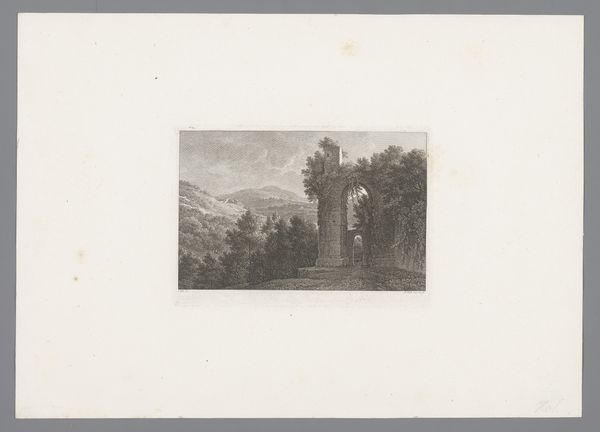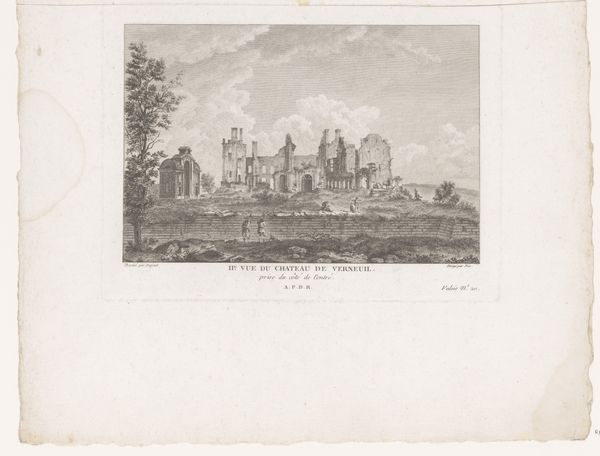
print, engraving
# print
#
landscape
#
romanticism
#
cityscape
#
history-painting
#
engraving
Dimensions: height 135 mm, width 190 mm
Copyright: Rijks Museum: Open Domain
Curator: Philipp Veith created this engraving, "Overwoekerde ruïnes nabij Rome en een vrouw met kind en twee geiten," around 1822. Editor: There’s such a pervasive sense of melancholy about it; the softness of the tones paired with the skeletal ruins. It's compelling. Curator: Absolutely. Think of the cultural fascination with Rome in the Romantic era, the weight of its history bearing down, visible in every crumbling brick. And the subtle social dynamics, here we find a family group, perhaps rural peasants, now dwarfed against the background of empire. The interplay between these symbols – history and domesticity – presents fascinating insight. Editor: The medium really reinforces that feeling, doesn't it? The delicate nature of an engraving, laboriously produced, to depict such a grandiose, but decaying, architectural presence. One questions the production, the need for such material labor and distribution, for the sake of spreading this rather bleak visual and moral statement. Curator: Precisely, and through a feminist lens, observe how Veith positions the woman, likely a mother. The ruin behind them—are they also, metaphorically, in decline? Are the burdens of history and social expectation disproportionately on their shoulders? Editor: Interesting how the means of reproducing images become more accessible around this period, making them tools for wider dissemination. Yet here we find the artist focused on something crumbling. It challenges one's assumptions about progress, really making one interrogate notions of utility. Curator: It makes us reconsider what histories and whose lives are worth remembering. Who is being preserved through these material objects, what values is Veith reflecting? The act of remembrance itself is deeply rooted in social privilege. Editor: Right. We look at it now through a lens of class and see it as an artefact representative of leisure culture. And though we speak now of its cultural significance and read deeply into gender roles, its material significance resides in how the work itself was spread and interpreted then—not just as high art. It truly encompasses this period, through process, depiction, and content. Curator: Definitely, I agree. Considering what we have looked at, the many lenses this artwork touches: the role of labor, and material, and identity... This engraving captures the complexity of romanticism beyond its simplistic label, which can encourage many social and material understandings about Europe at the time.
Comments
No comments
Be the first to comment and join the conversation on the ultimate creative platform.
